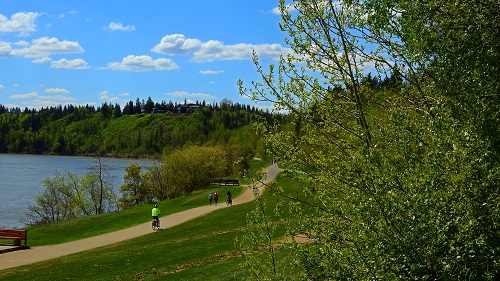
Trails provide a multitude of benefits for communities, including recreation, health and wellness opportunities, economic development, transportation, parkland access, environmental protection and sustainability. Despite the benefits, trail projects can pose challenges for agencies. These challenges, which can range from “not in my backyard” (NIMBY), funding or land access to political, environmental or other issues, can seem like perpetual barriers.
Once you understand the barriers to implementing trail projects, you can prioritize them and assess how much control or influence capacity is available, either by you or other actors. Through this process, you can seek out strategies, propose solutions and develop a timetable for success. Much like a to-do list, identifying barriers and understanding their significance will guide the path forward.
Political Barriers
Political actors can include supporters, opponents, elected officials, staff and the public. Who are the local advocates? Which elected officials does this affect? What is the motive for opposition or support? While overcoming the NIMBY mindset can be daunting, collaborating and listening to residents’ concerns go a long way.
Internal agency actors and factors also can act as barriers. Agency staff, from field operations to executive leadership, must have a good understanding of the project vision and expectations to believe in a project and adjust resources to make it possible. Often, institutional barriers, such as inter-departmental strife (e.g., parks versus public works) can lead to a rivalry for resources. Who sets the standard, who maintains resources, and which department receives them? Acknowledging these institutional barriers can lead to improved collaboration and citywide effort to bring multidisciplinary projects forward.
 Societal Barriers
Societal Barriers
This barrier focuses on what is happening in the community. Are there other factors influencing the public perception? Are there larger external struggles at play? How does this trail impact a neighborhood? Acknowledging that a trail may not be priority for a community is important. Garnering community support is critical to success. Knowing when to support the community’s needs first can aid in future support of the trail project.
Relevancy Barriers
How relevant is the project? Does the community want this project?
Physical Barriers
These barriers are either human-caused or natural. In the natural context, slope and topography can make a trail project challenging. While it would be nice to always have a trail run along the creek or through a bluff, these can be cost prohibitive, unsafe and unmanageable. Other barriers include property ownership.
Resource Barriers
Funding is always a barrier to implementation, but what is more challenging is the ongoing need for funding, staff and policies to ensure a sustainable project that is a valuable asset and not a burden to a department or community. During the master planning process or preliminary design, assessing ongoing maintenance needs, trail policies and volunteer requirements can provide a neutral forum for discussing how to operationalize needs and concerns.
Identifying barriers takes some effort and patience, but this assessment can help your community, department or group determine where to focus efforts and how to prioritize the challenges within trail projects. During this process, the barriers become major milestones of achievement once conquered. Again, trail implementation is like a to-do list, and seeing what needs to be done and knowing how to scratch the barriers off the list can help to guide the path forward.
This article was used with permission from NRPA, where it was originally published, at this link.

